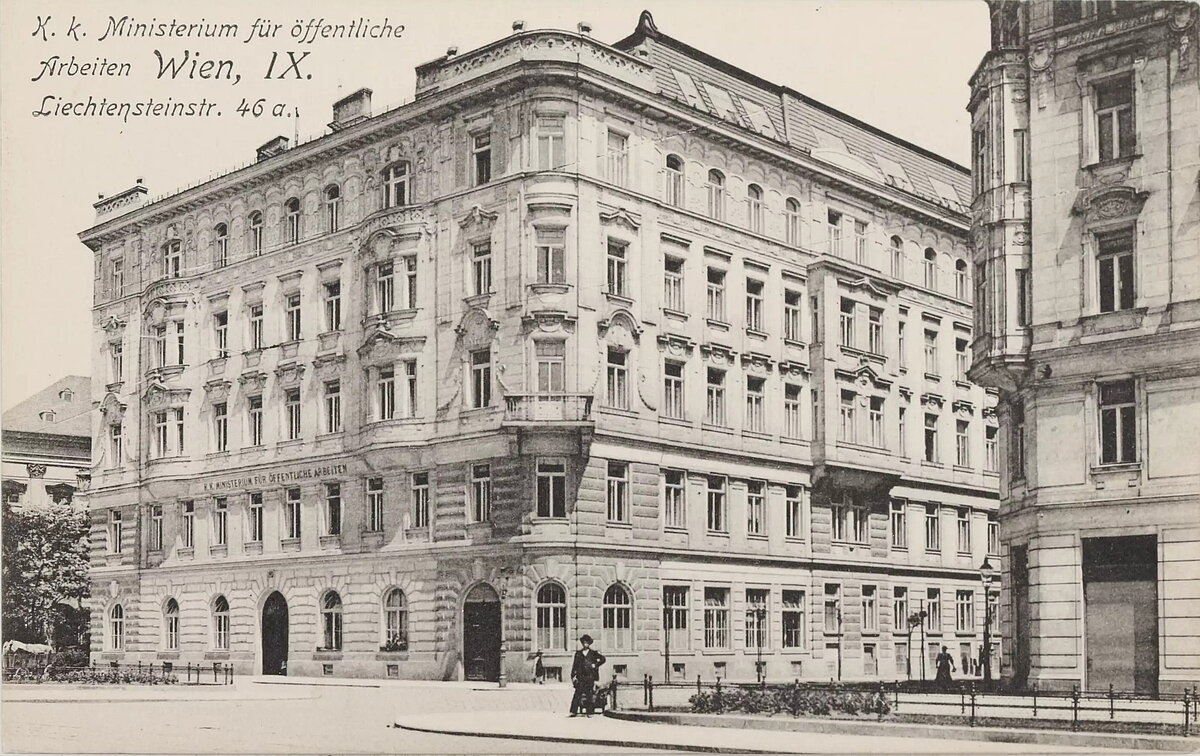“Invisible Agents”. Ministries and Architecture (1908-38)
Policies, Principles, and Projects in Central European Ministries of Public Works
In the famous novel The Castle, Franz Kafka outlined a system ruled by “mysterious” authorities that are hardly accessible and incomprehensible. Kafka´s key protagonist K. strives for access to the Castle, he constantly faces uncertainty and difficulty in grasping the system defined behind its walls. The Castle´s presence and materiality contrasts sharply with a lack of comprehension of its meaning and agency.
As Kafka´s K. heads to gain entrance to the Castle to obtain a sense of reality, we aim to explore three “mysterious” ministries in three states that were interconnected in time, space and state in a complex frame of reference. The k. k. Ministerium für öffentliche Arbeiten of the Habsburg monarchy, the Bundesministerium für Handel und Verkehr of the Austrian and the Ministerstvo veřejných prací of the Czechoslovak First Republic were responsible (apart from other objectives) for state building matters including street, water and bridge construction, but above all building construction (“Hochbau”) as the center of our scientific attention.
However, their actual agencies remain mysterious as these are not part of academic scholarship. Therefore, the project's key objective is to shift the dominant perspective from common interest in architects and styles to institutions like ministries. We will scrutinize initiatives, practices, personalities, and outputs of the Ministries in Austria-Hungary (1908–1918) and the first Czechoslovak and Austrian Republics (1918–1938) as part of a broader understanding of reality in Central Europe at times of dramatic change. The chosen period of investigation brings us methodologically to the specific question of the continuation of institutional (building) competence after the change of state configurations and political systems, i.e. the intersection of institutional, political-systemic and architectural-historical categories in both diachronic and synchronic terms. And as Kafka´s novel remained incomplete, we intend our project as a base for future research in this new academic direction.
The first half of the 20th century was a period of intense activity of Ministries of Public Works in Austria-Hungary and its successor states. Yet, the dominant discourse in architectural history is deeply anchored in examining styles, architects and buildings and largely ignores the major actor: to understand architecture more profoundly we shift the research perspective towards ministries as key commissioners. By situating past and present attitudes to the interaction of architects and institutions in Central Europe, this project aims to reveal not only state architecture in its diversity, but also the prejudices which still attend the scholarly discussion. We aim to explore new perspectives on state commissions and consider how they contribute to a more comprehensive understanding of building production.
Shifting the perspective towards the underexplored field of state institutions opens up a new way of evaluating the history of modern architecture. Investigating initiatives, practices and personalities of the ministries in Austria-Hungary and the first Czechoslovak and Austrian Republics leads us to a clearer picture of the quantity, quality, and range of state tasks in the field of architecture. Examining the official building agenda in different countries will question the policies in heterogeneous political systems and state priorities in times of radical transformations. The project aims to shed new light on the relationships of cultural and political elites in times of key transformations in Europe.
Apart from focussing on ministries and hitherto marginalized building tasks, our bilateral project allows us to gain critical insights (by transgressing traditions of national historiographies) whether for two different states that build on a common legacy, continuities and ruptures are the same, similar or different. For future scholarship, our project structure can easily be expanded far beyond the Habsburg monarchy and translated into different frameworks.
Understanding architectural history as a transnational heritage, we want to foster cooperative research bilaterally (the project consists of an Austrian team financed by the FWF and a Czech team with funds provided by the GAČR) by investigating the relationship and interaction between superior and subordinate authorities (1908–18) and between ministries of two nation-states (1918–38). Based on proven methods of art history including discourse analytical, typological, post-colonial and feminist approaches, we will contextualize the objects into transnational frameworks. Apart from a mid-term conference, the project’s results will be delivered in a digital data collection and a print publication, which will analyse overarching questions based on case studies.
Austrian team
Contact and project leader
Project staff
Dr. Anna Stuhlpfarrer
Raphaela Hemetsberger MA
Doz. Dr. Ruth Hanisch
Doz. Dr. Andreas Nierhaus
Doz. Dr. Antje Senarclens de Grancy
Technical support
Mag. Christoph Freyer
Czech team
Contact and project leader
Dr. Vendula Hnídková
Project staff
Dr. Dita Dvořáková
Dr. Jan Galeta
Mag. Barbora Řepková
Project duration
Juni 2023 – May 2026
Funding
Austrian Science Fund (FWF): project number I 6241-G
